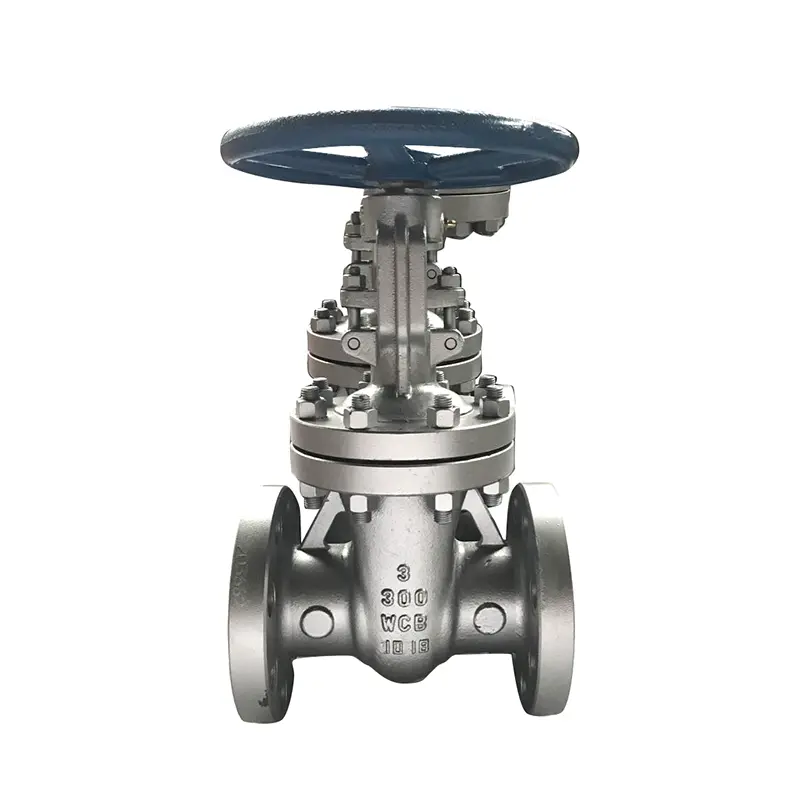Understanding Cast Carbon Steel Gate Valves: Strength, Durability, and Applications
2024-12-16
Gate valves are indispensable components in industrial piping systems, offering reliable flow control in a wide range of applications. Among the various materials used for these valves, cast carbon steel stands out for its robustness, versatility, and cost-effectiveness. In this article, we will explore the features, benefits, and applications of cast carbon steel gate valves, shedding light on why they are a preferred choice for many industries.
What Are Cast Carbon Steel Gate Valves?
Gate valves are designed to control the flow of liquids and gases by lifting or lowering a gate inside the valve body. Cast carbon steel gate valves are manufactured using cast carbon steel, a material renowned for its high strength and excellent performance under pressure and temperature extremes. These valves are typically used in applications where durability and reliability are paramount.
Key Features of Cast Carbon Steel Gate Valves
1. Material Strength: Cast carbon steel provides exceptional mechanical strength, making it suitable for high-pressure environments.
2. Temperature Tolerance: These valves can withstand a wide range of temperatures, from cryogenic conditions to high-heat applications.
3. Corrosion Resistance: When appropriately treated or coated, cast carbon steel offers excellent resistance to corrosion, extending the valve’s lifespan.
4. Versatility: Available in a variety of sizes, pressure ratings, and configurations, these valves cater to diverse industrial needs.
5. Cost-Effective: Compared to stainless steel or exotic alloys, cast carbon steel is more affordable while delivering comparable performance in many scenarios.
Advantages of Cast Carbon Steel Gate Valves
1. Durability: These valves are built to last, even in challenging environments. Their robust construction minimizes wear and tear, reducing maintenance needs.
2. Tight Shut-Off: The gate’s design ensures minimal leakage when fully closed, making them ideal for isolating sections of a pipeline.
3. Low Pressure Drop: When fully open, gate valves provide an unobstructed flow path, minimizing energy losses.
4. Customization: Manufacturers offer a range of options, including bolted or pressure-seal bonnets, flexible or solid wedges, and flange or threaded ends.
Common Applications
1. Oil and Gas:
- Used in upstream, midstream, and downstream operations for controlling crude oil, natural gas, and refined products.
- Essential in pipelines, refineries, and storage facilities.
2. Power Generation:
- Employed in cooling water, steam, and condensate systems.
- Ideal for high-pressure, high-temperature applications in thermal and nuclear power plants.
3. Water and Wastewater:
- Utilized in municipal and industrial water distribution systems.
- Effective in managing raw and treated water, as well as wastewater.
4. Chemical and Petrochemical:
- Handle various chemicals and feedstocks in processing plants.
- Resist corrosion when used with appropriate coatings or linings.
5. Pulp and Paper:
- Control the flow of pulp slurry and other fluids in production processes.
Maintenance Tips for Cast Carbon Steel Gate Valves
To ensure optimal performance and longevity, adhere to these maintenance practices:
1. Regular Inspection: Periodically check for signs of wear, corrosion, or damage to the valve body and components.
2. Lubrication: Keep moving parts well-lubricated to minimize friction and wear.
3. Cleaning: Remove debris or buildup inside the valve to maintain smooth operation.
4. Replace Seals and Gaskets: Inspect and replace these components as needed to prevent leaks.
5. Operate Periodically: Exercise the valve regularly to prevent it from seizing due to prolonged inactivity.
Cast carbon steel gate valves are a cornerstone of industrial flow control, offering a winning combination of strength, reliability, and affordability. Their versatility and durability make them suitable for a broad spectrum of applications, from oil and gas to water treatment. By understanding their features and adhering to proper maintenance practices, you can maximize the value and performance of these essential components.



